Saturday, February 11, 2006
Silvered Æ antoninianus, Gallienus, Rome, Göbl 638s
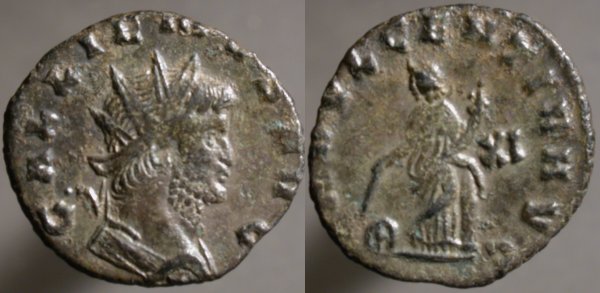
GALLIENVS AVG, Radiate cuirassed bust, seen from slightly behind | INDVLGENTIA AVG, Indulgentia standing left, leaning on column right, with right hand pointing a baton at wheel at her feet left, holding cornucopia in left hand. XI in right field.
A little over three years ago, I was quite pleased to acquire this example, even on the ragged blank it was struck on. While I try to avoid "upgrades", particularly when the new coin is as far from perfection as this one, when it's so likely that some day I'll find a still better one to buy. On the other hand, Göbl attests only two examples with this bust. (Neither of my examples are his plate coin,) Perhaps I won't encounter a better example.
Friday, February 10, 2006
Æ25, Thessalian Koinon, Salonina, Sear GIC 4636
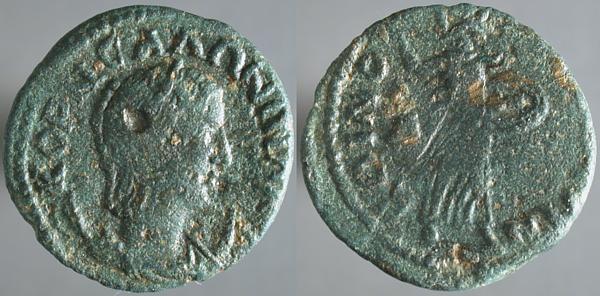
KOPN CAΛΩNINA, Diademed draped bust right on crescent | KOINON [ΘECCAΛΩN], Athena, with aegis and spear, advancing right. Δ behind.
If I understand this, in the provinces (with the exception of Roman Egypt) Imperial gold and silver (or silver-like) coins were the high-value money, with locally-produced bronze serving as small change.
Marvin Tameanko, in his Monumental Coins has suggested the provincial coins could serve as "picture postcards from the Acropolis", readily-carried souvenirs that the traveller could bring home, as the modern traveller brings home a pocketful of Euros.
Jean Andreau, in his Banking and Business in the Roman World hints at an additional reason:
For many cities were authorized by the Emperor to mint bronze or even silver coins, particularly in the eastern part of the Empire. Not all of the coins minted officially in the imperial workshops constituted valid currency throughout the Empire. These various currencies that circulated concurrently in different parts of the Empire sometimes needed to be changed.
But the most informative documents about the changing of money are the insciptions written in Greek that relate to changing high-value coins into small-value ones. The assayers/money changers were entitled to charge a commission (of about 5 per cent) on such operations, and they appear to have derived substantial profits from this. In some cities, for example Pergamum, Mylasa, and Sparta under the Empire (the documents that have come down to us date from the second and third centuries AD), all money-changing of this type had to pass through an individual money-changer or a company of money-changers/bankers who or which had been granted a money-changing monopoly. The city would levy part of the money-changer's commission, by way of a municipal tax.
And the city makes a few percent on the same coin, over and over. It's an idea that certainly appeals to modern ears.
Thursday, February 09, 2006
“the most expensive coin in history”
Silvered Æ antoninianus, Gallienus, Antioch, Göbl 1659e
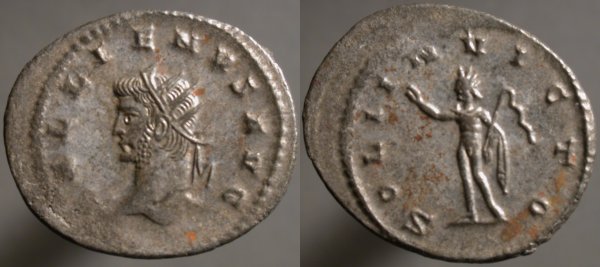
GALLIENVS AVG, Radiate head left | SOLI INVICTO, Radiate draped Sol standing left, raising right hand, holding whip in left.
More piddly details, this of interest since I already had this reverse matched with a radiate draped cuirassed bust right and with a radiate cuirassed bust right, but I didn't have it with a radiate head left. Göbl attests only one example like this. Rare is good, even if there's little evidence that many people are concerned.
Wednesday, February 08, 2006
AR denarius, L. Scribonius Libo, Roman Republic, 62 BCE, Crawford 416/1
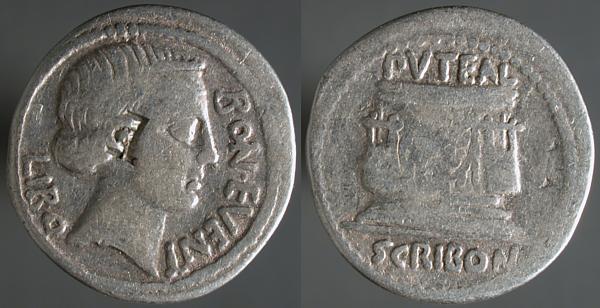
Diademed head of Bonus Eventus right. LIBO left, BON·EVENT right | Puteal Scribonianum decorated with two lyres, wreathes. PVTEAL above, SCRIBON in exergue.
Here, something about Puteals and specifically the Puteal Scribonianumm which the gens Scribonia used as a sort of badge.
A bit odd-looking around Bonus Eventus's eye and marred by an odd banker's mark by his ear, this is one of the nicer-looking examples from my first few coins of the Republic. The look reminds me of the US coins designed by francophile Charles Barber.
Tuesday, February 07, 2006
Æ21, Philippi in Macedonia, Gallienus, SNG Copenhagen 311
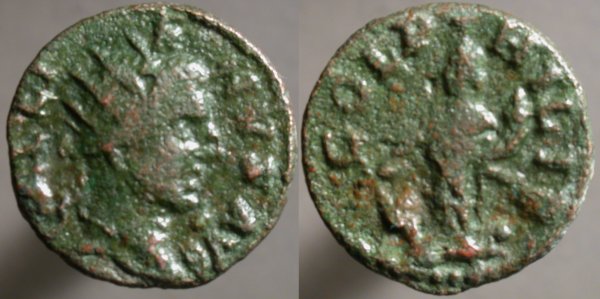
GALLI_E_NVS AVG, Radiate head right | COL P_HILIP, Fortuna standing left, holding rudder with right hand and cornucopia in left.
To date, I've obtained two coins of this city, both reasonably-priced, from sellers who recognized the emperor but not the city. I had to do a bit of digging to find the city for the first one, this last one I was nearly sure from the seller's photo.
Monday, February 06, 2006
Billon antoninianus, Saloninus, Samosata, Göbl 1707p
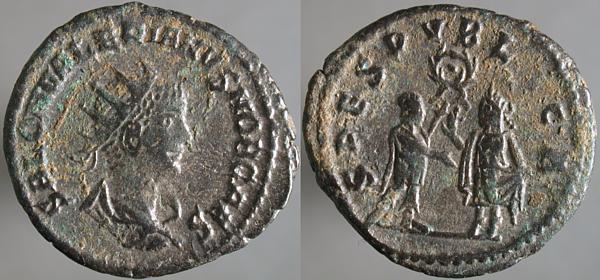
SALON VALERIANVS NOB CAES, Radiate draped cuirassed bust right | SPES PVBLICA, Spes standing left, presenting flower to Saloninus. Wreath with central pellet above.
Someone at Samosata was very taken by scenes with two figures. There may have been some centralized means of approving or rejecting what went on an imperial coin, but clearly they allowed the local mint officials a lot of control over the details.
Sunday, February 05, 2006
Æ tetradrachm, Alexandria, Gallienus, Emmett 3804(10)
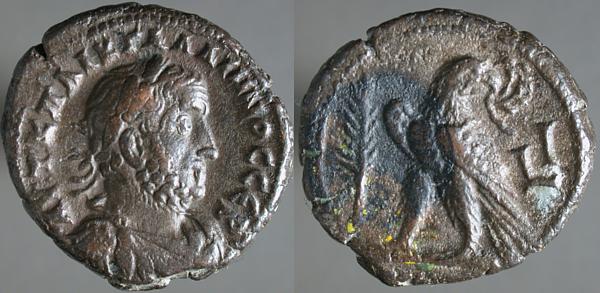
AVT K Π ΛIK ΓAΛΛIHNOC CEB, Laureate draped cuirassed bust right | LI, Eagle standing left, head right, holding wreath. Palm branch left, regnal year right.
The "L"-shaped character that's part of the regnal year on Alexandrian coins is a bit enigmatic: it's neither a greek letter nor are there other latin letters on the coins. It's thought to be a simplified hieroglyphic pictograph of a snake rising up.

